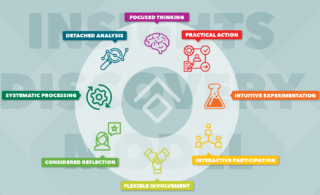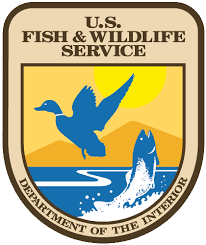Discovery: Step 1 to UX Success Step 1: Begin Your Technology Initiative with a Discovery Phase
This is the third blog of a multi-part series to guide global enterprises and federal government agencies on best practices that drive successful operational efficiency through better UX using an Agile methodology
By Jon Fukuda
Discovery is your shot at uncovering the crux of why your organization’s product or service is experiencing user acceptance issues, usability problems, or a general decline in user satisfaction. It’s critically important to get the discovery phase right otherwise you risk not solving your organization’s problem and building the wrong system. Imagine starting a business without studying the market; or hiring a new employee without conducting an interview. Both scenarios seem ridiculous. Yet, many organizations initiate large scale IT and digital projects while bypassing the discovery phase.[1]
A discovery phase is meant to reduce the risk of failure and ensure that when you launch your products—such as web, mobile or computer applications—and IT systems you have maximized the potential of the project. It represents a chance to test the market while sharing ideas and examining each angle available to understand the needs of both the consumers or citizens and employees using the systems inside and out.
Limina provides a bridge between your organization’s business requirements and technology implementation while keeping a fixed eye on the user. We work alongside our clients to set project goals, to establish a clear understanding of your organization’s user needs, goals and pain points, and to help our clients stay focused on meeting their goals.
The discovery process starts with a thorough UX project scope that typically includes stakeholder workshops and interviews, along with a service or product walkthrough and an overview of known user experience and usability pain points. While many companies and federal government agencies have documented known issues and have plans in place to reinvigorate and revitalize the digital experience, these existing plans are typically generated top down without full awareness of key user needs and cultural considerations that can only be revealed from directly involving target users in the discovery process.
[1] https://www.arrkgroup.com/thought-leadership/the-importance-of-getting-the-discovery-phase-right/
The upfront user research provides a solid understanding of your organization’s internal processes and operations, and it is geared to capture the current state of your digital presence, your service or product, and end user communications. It is what helps organizations understand why issues are occurring, and the key learnings are used to build a design plan to get the organization back on track. This is where you’ll get the opportunity to learn if your organization needs to re-organize operations to sustainably support the internal and external user experience.
At the end of the discovery phase, Limina delivers to your organization a concrete blueprint or roadmap outlining the vision of what you want to achieve, including outputs and outcomes of the project. Outputs include the major project deliverables, such as reports, applications and websites. Outcomes include the expected results of the project. For example, if it’s a website, the outcomes would include your organization’s expectations in terms of daily visitors or monthly revenue.


Leading with UX—U.S. Fish and Wildlife
Limina has been working with the U.S. Fish and Wildlife Service (FWS) to perform a strategic redesign of their digital infrastructure. The genesis of this initiative was driven by a need to revamp a public website (fws.gov), but upon closer inspection, it was clear that a new paradigm of content collaboration, production and management were necessary to support both the needs of the FWS employees and the citizens who interact with FWS content and services.
Discovery phase was the first step to get to the heart of the situation
Limina began work with FWS by conducting a robust discovery phase, including, but not limited to stakeholder workshops, business analysis, employee, public audience segmentation, and an audit of current state technology. Through the use of empathy-based research and analysis, our team maintained a focus on the user experience, process efficiency, ease of use, and ultimately a sustainable approach to leveraging Drupal and extensible web tools.
User research informed the project scope and approach
Limina’s methodology allowed for the opportunity to strategically scope the work to align with and meet the needs of both FWS and the public. We conducted both internal and external user research, which informed the definition of requirements and critical success factors, and ensured that the federal agencies not only understood how to best meet public needs but also how to drive internal efficiencies to maximize the support of those needs.
Results from a holistic UX driven approach
By taking a user-centric approach, to what would otherwise be a vehicle for outbound federal policy and regulatory functions, Limina set a new paradigm for addressing the public needs and driving the FWS mission. This shift put a higher degree of emphasis on strategic direction, tactical requirements, and project scope for internal digital infrastructure to best support the internal employees who are charged with the creation, collaboration, and management of their internal and public digital assets as a critical factor necessary for improving citizen engagement.
We defined a dual system solution for internal operations to best support external affairs. Thinking holistically about upstream and downstream processes, use cases, users and scenarios ensures that the solution can survive in the context of the larger government ecosystem. What’s more is that the FWS’ employees feel empowered to better meet the needs of the public.
– Conclusion –
Beginning your initiative with discovery is a best practice that makes a tremendous difference in simplifying complex computer interactions and creating successful products and services.
Whatever you create without upfront UX discovery is at a much higher risk of failure than if you had involved UX activities in the beginning of the process. If you build it, they will come. But you may build the wrong system and the tech savvy consumers and citizens as well as employees might not use it or be satisfied with it. Securing the right foundation before initiating a major and expensive software and system development process is critical to bridge the gap between what users want and what you can deliver—and to the overall success of the initiative.
Said another way, you need to discover what people want and need, before creating a product or service that you think they want.